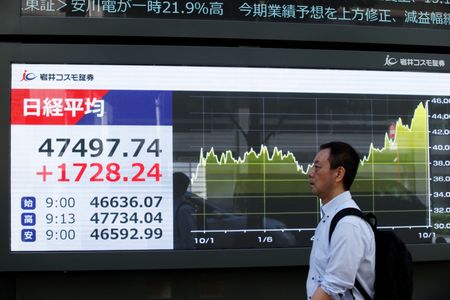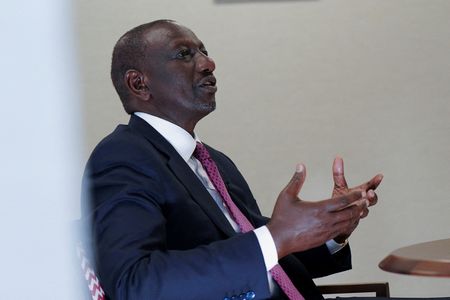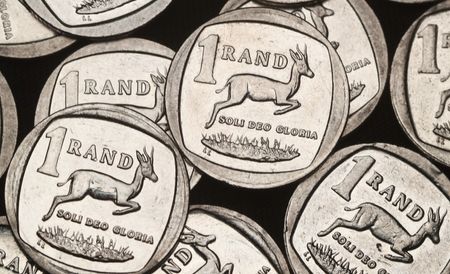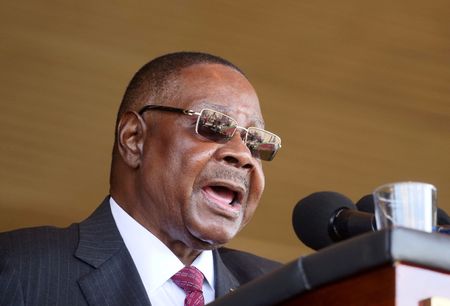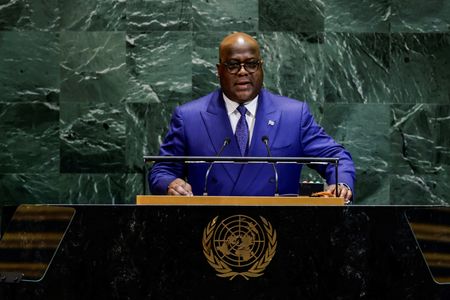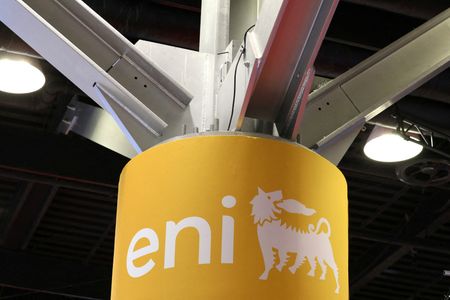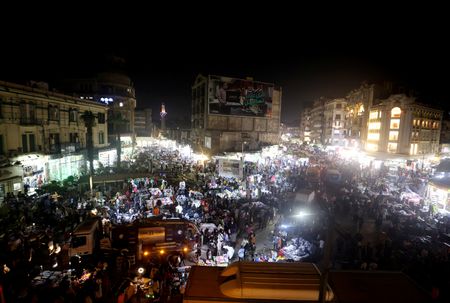By Seher Dareen
LONDON (Reuters) -Oil prices rose more than 1% on Monday after OPEC+’s planned production increase for November was more modest than expected, tempering some concerns about supply additions, though a soft outlook for demand is likely to cap near-term gains.
Brent crude futures climbed 89 cents, or 1.4%, to $65.42 a barrel by 1107 GMT, while U.S. West Texas Intermediate crude was at $61.72, up 84 cents – also about 1.4%.
“The market was expecting a somewhat larger increase from OPEC+ as shown in the structure last week,” said Janiv Shah, an analyst at Rystad.
“However the modest 137,000 bpd bloats the already-oversupplied balance for the fourth quarter of 2025 and 2026.”
On Sunday, the Organization of the Petroleum Exporting Countries plus Russia and some smaller producers said it would raise production from November by 137,000 barrels per day (bpd), matching October’s figure, amid persistent concern over a looming supply glut.
In the run-up to the meeting, sources said although Russia was advocating for an increase of 137,000 bpd to avoid pressuring prices, Saudi Arabia would have preferred double, triple or even four times that to quickly regain market share.
The modest production update also comes at a time of rising Venezuelan exports, the resumption of Kurdish oil flows via Turkey, and the presence of unsold Middle Eastern barrels for November loading, PVM Oil Associates analyst Tamas Varga said.
Saudi Arabia kept unchanged the official selling price for the Arab Light crude it sells to Asia.
While refining sources in Asia surveyed by Reuters had expected a slight increase, those expectations diminished as concerns about rising Middle Eastern crude supply felled the premium to a 22-month low last week. [CRU/M]
Despite the U.S. pressuring India, one of the top buyers of Russian crude, to ease on its purchases of oil from the country, an Indian government official told Reuters on Monday that there is enough supply of Russian oil for Indian refiners as attacks on Russian energy facilities have led to increased availability, helping in part to support the oil market.
In the near term, some analysts expect the refinery maintenance season starting soon in the Middle East to also help cap prices. [REF/OUT]
Expectations of weak demand fundamentals in the fourth quarter are another factor limiting the market’s upside.
U.S. crude oil, gasoline and distillate inventories rose more than expected in the week ended September 26 as refining activity and demand softened, the Energy Information Administration said last week.
“If we see a steadier rise in production then the downside in oil prices may be contained. Much now depends on whether the U.S. economy can reaccelerate over the rest of 2025 and into 2026, which would help demand immensely,” said Chris Beauchamp, chief market analyst at IG Group.
(Reporting by Seher Dareen in London, Emily Chow in Singapore; Editing by Edwina Gibbs, Clarence Fernandez and Emelia Sithole-Matarise and Sharon Singleton)



